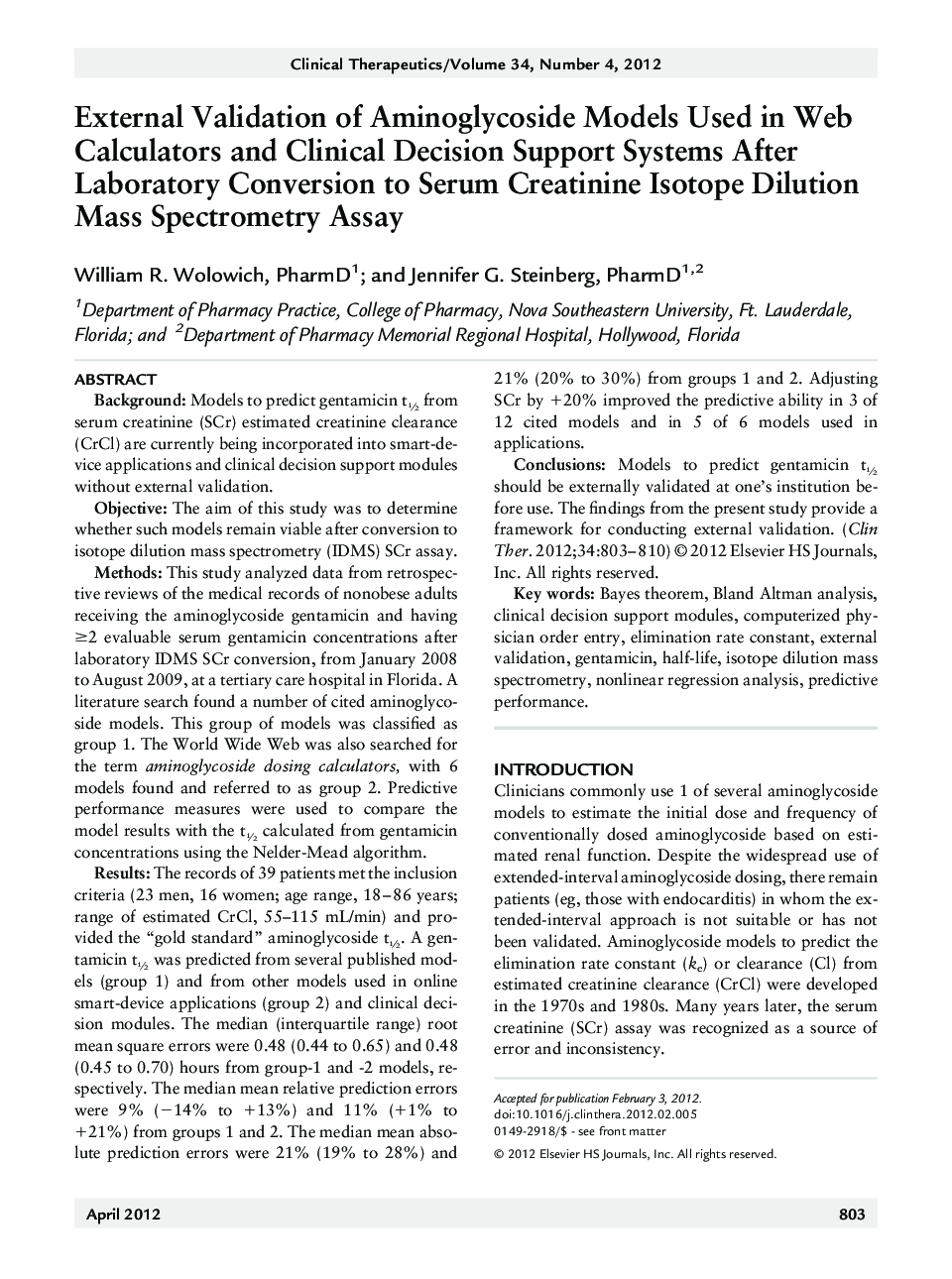| Article ID | Journal | Published Year | Pages | File Type |
|---|---|---|---|---|
| 2527511 | Clinical Therapeutics | 2012 | 8 Pages |
BackgroundModels to predict gentamicin t½ from serum creatinine (SCr) estimated creatinine clearance (CrCl) are currently being incorporated into smart-device applications and clinical decision support modules without external validation.ObjectiveThe aim of this study was to determine whether such models remain viable after conversion to isotope dilution mass spectrometry (IDMS) SCr assay.MethodsThis study analyzed data from retrospective reviews of the medical records of nonobese adults receiving the aminoglycoside gentamicin and having ≥2 evaluable serum gentamicin concentrations after laboratory IDMS SCr conversion, from January 2008 to August 2009, at a tertiary care hospital in Florida. A literature search found a number of cited aminoglycoside models. This group of models was classified as group 1. The World Wide Web was also searched for the term aminoglycoside dosing calculators, with 6 models found and referred to as group 2. Predictive performance measures were used to compare the model results with the t½ calculated from gentamicin concentrations using the Nelder-Mead algorithm.ResultsThe records of 39 patients met the inclusion criteria (23 men, 16 women; age range, 18–86 years; range of estimated CrCl, 55–115 mL/min) and provided the “gold standard” aminoglycoside t½. A gentamicin t½ was predicted from several published models (group 1) and from other models used in online smart-device applications (group 2) and clinical decision modules. The median (interquartile range) root mean square errors were 0.48 (0.44 to 0.65) and 0.48 (0.45 to 0.70) hours from group-1 and -2 models, respectively. The median mean relative prediction errors were 9% (−14% to +13%) and 11% (+1% to +21%) from groups 1 and 2. The median mean absolute prediction errors were 21% (19% to 28%) and 21% (20% to 30%) from groups 1 and 2. Adjusting SCr by +20% improved the predictive ability in 3 of 12 cited models and in 5 of 6 models used in applications.ConclusionsModels to predict gentamicin t½ should be externally validated at one's institution before use. The findings from the present study provide a framework for conducting external validation.
